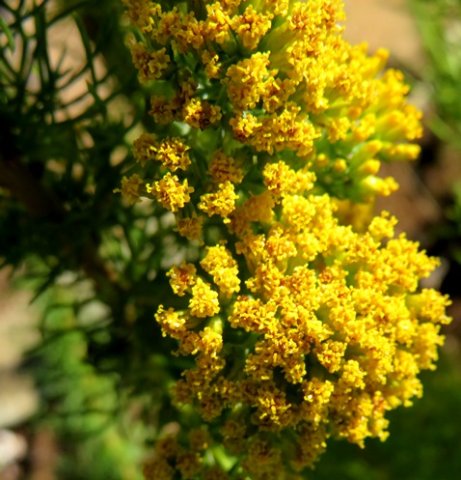Phymaspermum

Author: Ivan Lätti
Photographer: Thabo Maphisa
Phymaspermum is a genus of shrubs in the Asteraceae or daisy family, some of them hairy.
The alternate leaves are linear or nearly cylindrical, entire or lobed, often with side-shoots from axils of primary leaves.
Most species bear flowerheads that have both ray and disc florets. The flowerheads grow solitary or in stem-tip clusters that are often corymb-shaped, the heads usually stalked.
The involucral bracts grow in four or five rows, forming bell-shaped or spherical heads. The bracts may have membranous tips, ciliate fringes or are hairless, sometimes with glands at the back. The receptacle below the involucre is flat or slightly convex.
White or yellow ray florets may be present, either female or bisexual, the corolla tubes ending in three pointed lobes. The disc florets are bisexual, short-tubed and five-lobed. The anthers have oblong to lanceolate appendages. The styles are cylindrical, sometimes thickened at the base and with linear branches.
The fruits are obovoid to ellipsoid, ribbed with tiny papillae but no pappuses or crowns of scales are present. The generic name, Phymaspermum, is derived from the Greek words phyma meaning swelling and sperma meaning seed, referring to the fruit-shape.
There are 19 species of Phymaspermum, all in southern Africa. There are species in the fynbos, some in the Little Karoo and others in the easterly and northerly grasslands. Some of the plants feature in traditional medicine and some species are browsed by game and stock.
The plant in picture is Phymaspermum acerosum (Leistner, (Ed.), 2000; Vlok and Schutte-Vlok, 2015).

